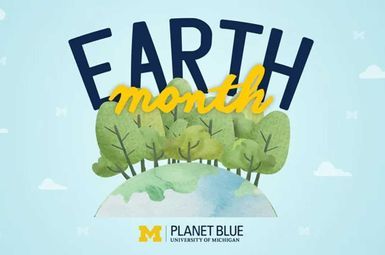
U-M is marking late March and all of April with a series of events focused on sustainability and climate action, continuing a tradition that began with the first “Teach-In on the Environment” in 1970—which grew into what is now known as Earth Day.

As technology progresses, so too do our options to get around. From public transit to autonomous vehicles, U-M experts are on the cutting edge in both catalyzing new transportation modes and in analyzing their impact and relation to broader sustainability. Key initiatives like Mcity and the Center for Sustainable Systems study the nexus between technological advancements, climate change, and related socioeconomic disparities and opportunities.

U-M is marking late March and all of April with a series of events focused on sustainability and climate action, continuing a tradition that began with the first “Teach-In on the Environment” in 1970—which grew into what is now known as Earth Day.

"Train travel in America is much more limited than, for example, in Europe. You often can’t get where you want to go. But you can get to Lincoln from Ann Arbor, with just one change in Chicago. What’s the carbon savings? A flight to Lincoln would add about 800 kg of CO2 emissions to my annual budget. The train trip is more like 85 kg. Takes more time, for sure, but that’s a big part of why emissions from train travel are so much lower."

As the architect of the Solar Energy Research Institute, which won 42 awards and was named the most energy-efficient building in the world, Rich von Luhrte knows how something is built is just as important as what is produced and why. That knowledge and his passion for addressing climate change have led him to establish a scholarship supporting students studying urban design.
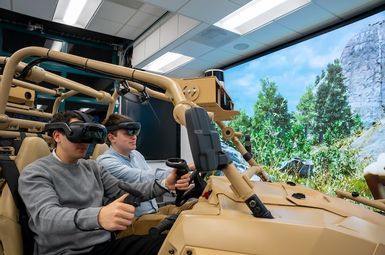
“We are driving the development of modern mobility systems with our advanced modeling and simulation methods, such as high-fidelity synthetic environments, virtual vehicle prototypes and virtual reality tools for human-autonomy teaming."
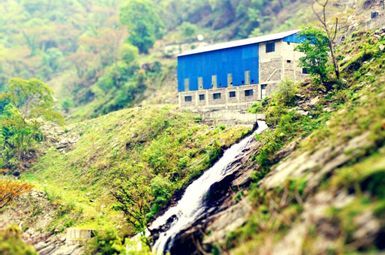
Four newly awarded sustainability “catalyst grants” at U-M are piloting innovative ways to bolster climate resilience and sustainability. Funded by the U-M Graham Sustainability Institute, these projects will explore renewable energy deployment in Nepal, climate justice in the Midwest, textile recycling innovation and equitable transportation planning.
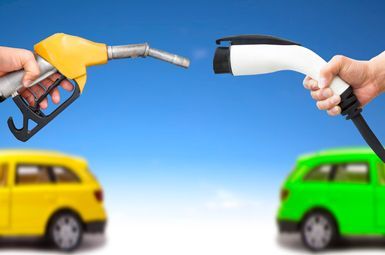
Is it actually cheaper to own an electric vehicle instead of a gas vehicle? It depends. U-M researchers say that where you live matters. For instance, a midsize SUV costs more to own in Detroit than in San Francisco—one of the most expensive cities in the country.
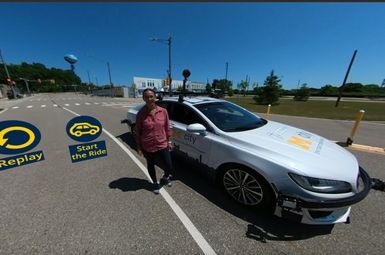
Autonomous and electric vehicles can be a positive force for people and the planet, but widespread gains require government incentives and investment to ensure access for users across the economic spectrum.
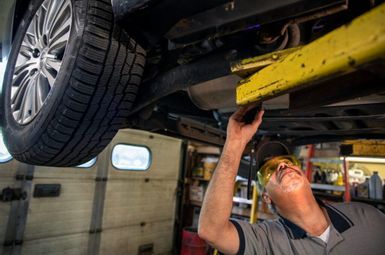
Electric vehicles (EVs) represent the largest auto industry shakeup since, perhaps, the introduction of the assembly line more than a century ago. Moving consumers from the internal combustion engines (ICE) that have powered their transportation since birth to something fundamentally different means major changes at all levels of the business.
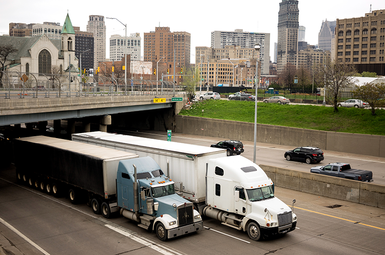
A U-M Public Health research team will support community leaders from the Southwest Detroit Community Benefits Coalition and the Southwest Detroit Environmental Vision, who are working to develop an app that quantifies truck traffic using data from phones and other electronic devices.
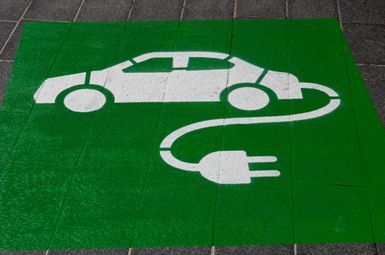
One of the goals outlined by the Biden administration’s National Climate Task Force in 2021 was to reduce U.S. greenhouse gas emissions to 50%-52% below 2005 levels by 2030. Now, a U-M study investigates one of the strategies to achieve this goal, which is to increase new vehicle sales to 50% electric by 2030. The study also reveals a path to meeting the targets.
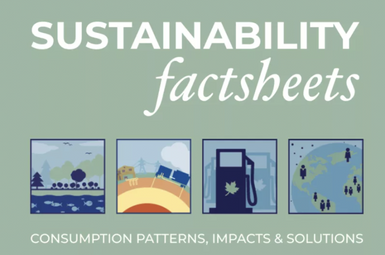
Each peer-reviewed factsheet presents data on patterns of use, life cycle impacts, and sustainable solutions. Updated annually by a current SEAS graduate student, the collection is a free resource to inform journalists, policymakers, business professionals, students, teachers and the public.
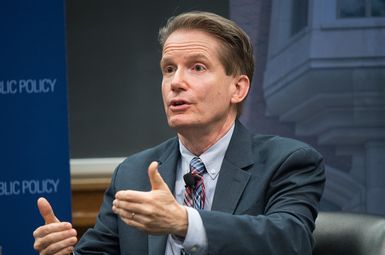
"The possibility of a sudden shift [of policy] would be pretty shocking for the industry to absorb. (...) I can’t imagine the industry is going to want to be jerked back and forth every four or eight years.”
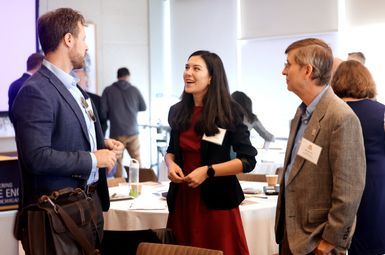
Electric and hybrid aircraft, hydrogen power, advanced airframes and more were on the table at U-M's first symposium on sustainable aviation.
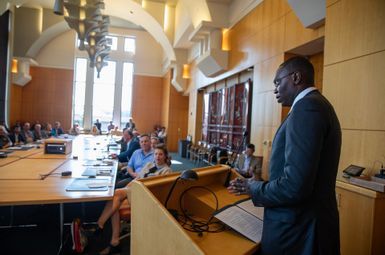
“The e-mobility revolution presents an opportunity for all of us to lead the world toward a more sustainable future. And, at Michigan, this means land, sea, space, and air mobility.”
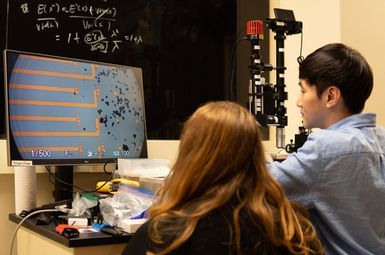
Rather than being solely detrimental, cracks in the positive electrode of lithium-ion batteries reduce battery charge time, research done at U-M shows. This runs counter to the view of many electric vehicle manufacturers, who try to minimize cracking because it decreases battery longevity.
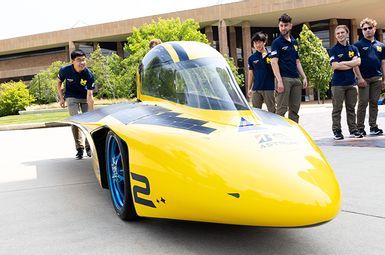
With a name inspired by the Latin phrase “ad astra,” which means “to the stars,” the U-M Solar Car Team unveiled its first three-wheeled bullet-style vehicle. “Astrum” is scheduled to race in this year’s Bridgestone World Solar Challenge, a biannual, 1,800-mile race from Darwin on Australia’s northern coast to Adelaide on the country’s southern coast.
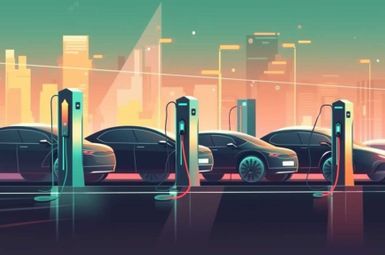
A new study estimates that the overall benefits to society of switching ride-hailing vehicles from gasoline to electric would be very modest—on average, a 3% gain per trip when other “costs on society” are factored in.

Engaging researchers from nine units across U-M and several other academic institutions, along with multisectoral partners, the projects will explore community solar, agrivoltaics, carbon-neutral building materials, aviation fuel waste reduction, and sustainable archeology.
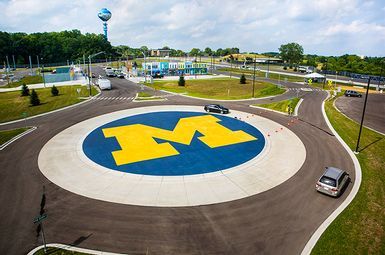
On the heels of the global chip shortage, U-M is part of a new public-private partnership that will establish a global semiconductor center of excellence in Michigan that focuses on the auto industry.
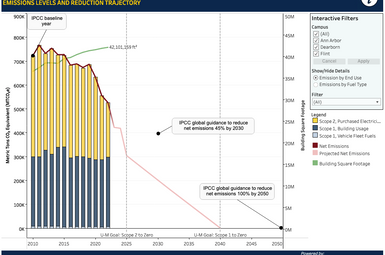
U-M has launched a report on the use of $300 million in “green bonds,” updated sustainability dashboards and building guidelines, and announced that it is the first university to join the First Movers Coalition, which aims to advance sustainable industrial technologies.
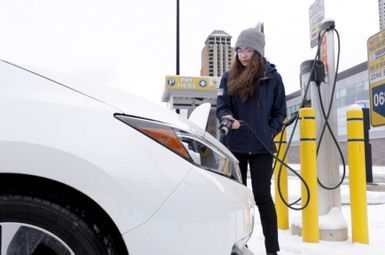
In an effort to cultivate a robust EV ecosystem in the place where the modern auto industry was born, the U-M Electric Vehicle Center is launching with these three focus areas: accelerating collaborative R&D, developing a highly skilled workforce, and establishing advanced campus infrastructure and facilities to support both research and education.

Replacing all of the oldest school buses in the nation could lead to 1.3 million fewer daily absences annually, according to a U-M study. The suspected cause of these preventable absences is exposure to high levels of diesel exhaust fumes, which can leak into school bus cabins or enter buses through open windows. Over time, exposure can exacerbate respiratory illnesses and other conditions and lead to missed school days.
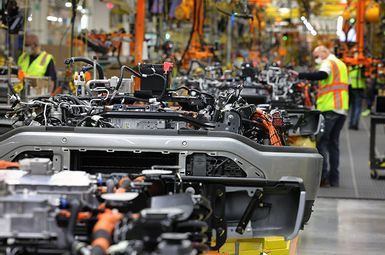
U-M is a partner in a major state-sponsored initiative to promote careers and attract talent to the state of Michigan’s burgeoning electric vehicle and transportation mobility sector.

U-M will continue to lead regional efforts aimed at transitioning the nation to connected and automated vehicles—bolstered by a new $15 million, five-year grant from the U.S. Department of Transportation.

The Graham Sustainability Institute’s Carbon Neutrality Acceleration Program (CNAP) announced $1,160,000 in funding for six new faculty research projects. They tackle a range of carbon neutrality topics and augment the CNAP portfolio, which addresses six critical technological and social decarbonization opportunities: energy storage; capturing, converting, and storing carbon; changing public opinion and behavior; ensuring an equitable and inclusive transition; material and process innovation; and transportation and alternative fuels.
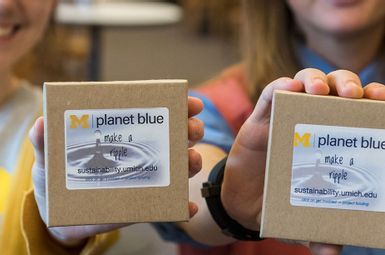
The U-M Ann Arbor campus achieved two of its 2025 sustainability goals in 2022, according to an annual Planet Blue fact sheet. It reduced greenhouse gas emissions by 25% from its 2006 benchmark — three years ahead of schedule — and exceeded its goal of applying 40% less chemicals to campus landscapes, compared with 2006, for the fourth consecutive year.
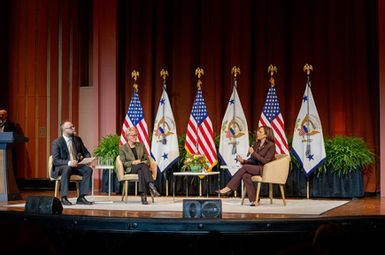
During a U-M visit to promote the Biden-Harris Administration’s efforts to address climate change—which include the passage of the Inflation Reduction Act, the Bipartisan Infrastructure Law and the CHIPS and Science Act—Vice President Kamala Harris told the packed crowd that “we are modeling some of the best of what innovation looks like at this moment.
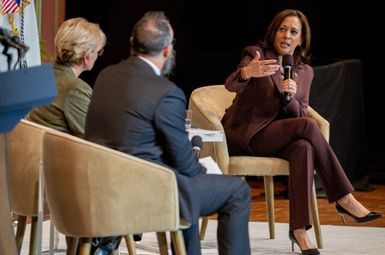
“I think that we are at one of the most incredible moments in this movement — a movement that, yes, we are a big part of, but that you all will be leading for years to come, and I’m so excited."
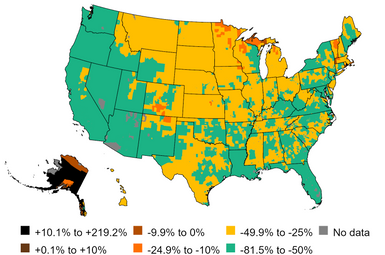
More than 90% of vehicle-owning households in the United States would see a reduction in the percentage of income spent on transportation energy—the gasoline or electricity that powers their cars, SUVs and pickups—if they switched to electric vehicles. However, more than half of the lowest-income U.S. households (an estimated 8.3 million households) would continue to experience high transportation energy burdens, defined in this study as spending more than 4% of household income on filling the tank or charging up.
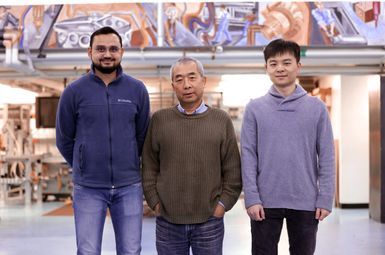
Making vehicle structures out of a combination of metals and plastics could make them dramatically lighter, stronger, safer and more environmentally friendly than the all-steel or all-aluminum approaches that dominate today. But how to quickly and cheaply join all those materials together has been a sticky problem. A U-M lab is developing solutions.
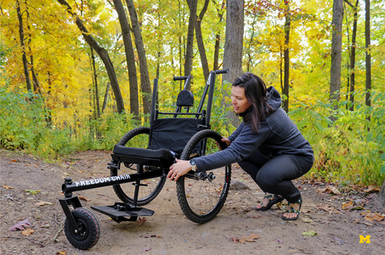
Spending time outside has been proven to promote overall well-being—and U-M medical and graduate student Kiley Adams, an avid lover of the outdoors, is helping ensure that everyone can enjoy the trails.
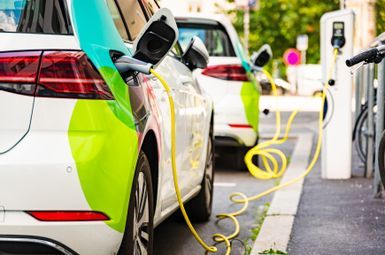
The Responsible Battery Coalition (RBC) today announced the launch of a comprehensive research project with the U-M Center for Sustainable Systems to compare the total cost of ownership of gas and electric vehicles (EVs).
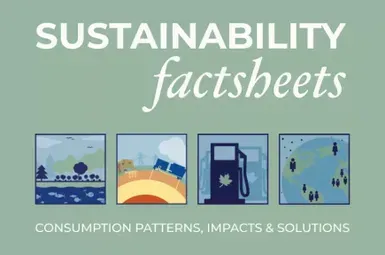
Did you know that the average North American household uses roughly 240 gallons of water daily? Or that the Department of Energy estimates that 75% of U.S. energy will come from fossil fuels in 2050, which is widely inconsistent with IPCC carbon reduction goals? Did you know that just 16¢ of every dollar spent on food in 2020 went back to the farm, whereas, in 1975, it was 40¢?
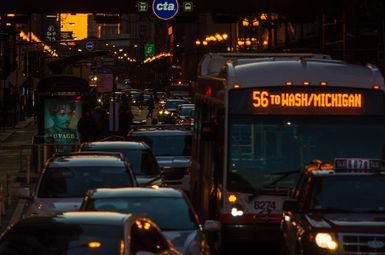
Nearly one-quarter of adults age 25 and older in the United States experience transportation insecurity, meaning they are unable to move from place to place in a safe or timely manner. More than half of people living below the poverty line experience transportation insecurity, which is higher than the rate of food insecurity among people in poverty.
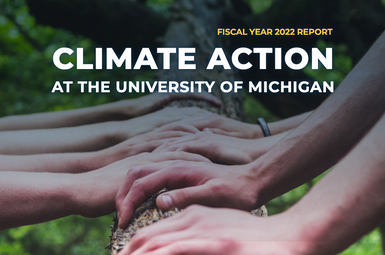
As U-M works toward carbon neutrality, plans are moving forward for renewable purchased electricity, widespread geo-exchange heating and cooling systems, and innovative financing mechanisms.

Hydrogen, the most abundant and lightest element in the universe, can play a significant role in accelerating Michigan’s clean-energy transition away from fossil fuels in the coming decades, according to a new report released today by U-M and the Michigan Economic Development Corporation.
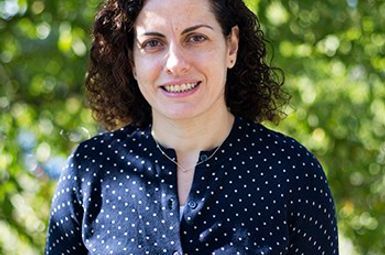
A U-M research team has received a $2-million grant from the National Science Foundation Smart and Connected Communities Program to examine ways to improve access from the start of a trip through the end of the transportation process. This study aims to provide end-to-end mobility solutions, highlighting navigation and maneuverability as key aspects of the mobility process.

Projects will pursue a range of carbon neutrality pathways, including carbon capture, renewable fuels, energy storage, aircraft electrification, solar power, chemical production, and circular economies.
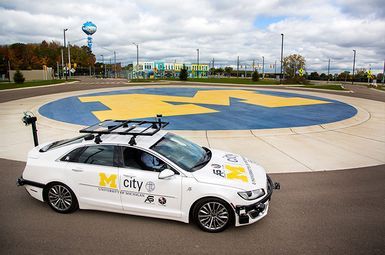
Mcity, which operates the world’s first purpose-built test environment for connected and autonomous vehicles (AVs), will invest $5.1 million from the National Science Foundation to supercharge the facility’s evolution into a test track unlike any other. By enhancing its physical testing environment, adding virtual reality software and generating real-world datasets, Mcity can provide tailor-made simulation scenarios for AV software testing.
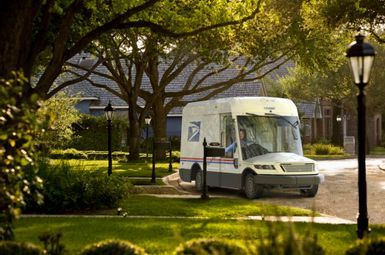
The Inflation Reduction Act signed into law by President Biden this month contains $3 billion to help the U.S. Postal Service decarbonize its mail-delivery fleet and shift to electric vehicles. A new U-M study finds that making the switch to all-electric mail-delivery vehicles would lead to far greater reductions in greenhouse gas emissions than previously estimated by the USPS.

U-M and Ford Motor Co. researchers modeled emissions for a single 36-item grocery basket transported to the customer via dozens of traditional and e-commerce pathways. Of the various scenarios analyzed by the researchers, in-store shopping by a customer driving an internal-combustion-engine pickup truck produced the most emissions (expressed as kilograms of carbon dioxide equivalents).

"Europe has been the global leader on climate policy for at least the last 10 years. They have done the most in making their own adjustments. They’ve tried to find ways to put pressure on the U.S., the rest of the world and move this forward. And despite all of these efforts — and some real emission reductions in Europe — they aren’t able to hide from the effects of this either."
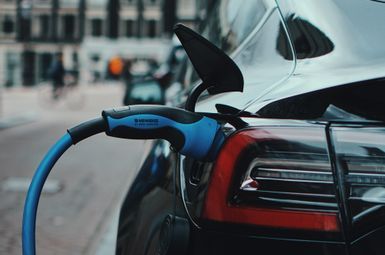
Testing the longevity of new electric vehicle battery designs could be four times faster with a streamlined approach, researchers at U-M have shown. Their optimization framework could drastically reduce the cost of assessing how battery configurations will perform over the long haul.

Neil Carter, an assistant professor at the U-M School for Environment and Sustainability, and his colleagues investigated how the rapid development of transport infrastructure, which is a major threat to endangered species worldwide, could affect future tiger populations. Roads and railways can increase animal mortality, disrupt habitats, and exacerbate other threats to biodiversity, according to the study.
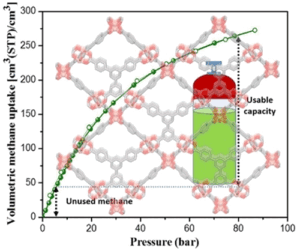
As the world turns its attention to electric vehicles as a replacement for gas-powered cars and trucks, some vehicles such as long-haul trucks and planes will need a bridge between gas and electric. Natural gas could be a viable alternative. It’s widely available and burns more cleanly than gasoline. There are even conversion kits already available to allow your passenger cars or long-haul trucks to run on natural gas, says Adam Matzger, a U-M professor of chemistry.